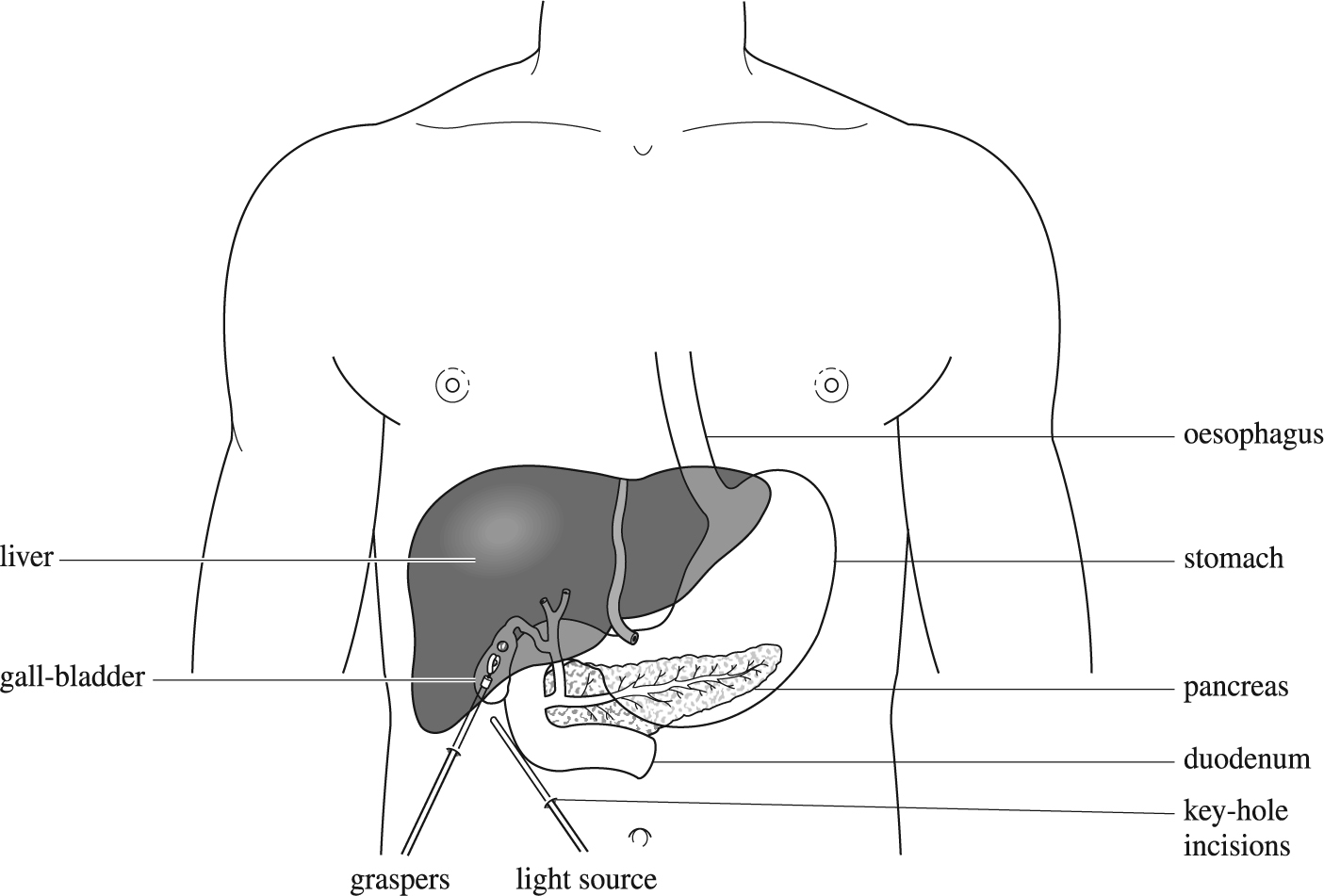More popularly called ‘keyhole surgery’, MIS is surgical intervention, whether diagnostic or curative, that causes patients the least possible physical trauma. It has revolutionised surgery, growing from a technique used by gynaecologists, urologists and innovative general surgeons to one routinely used in general surgery, GYNAECOLOGY, UROLOGY, thoracic surgery, orthopaedic surgery (see ORTHOPAEDICS) and OTORHINOLARYNGOLOGY.
MIS is commonly carried out by means of an ENDOSCOPE that is inserted through a small incision in the skin. A small attachment on the end of the endoscope provides an image that can be magnified on a screen, leaving the surgeon's hands free to operate through a second small incision while his assistant operates the scope. Halogen bulbs, fibreoptic cables and rod lenses have all contributed to the technical advancement of endoscopes. Operations done in this manner include extracorporeal shock-wave LITHOTRIPSY for stones in the gall-bladder, biliary ducts and urinary system; removal of the gall-bladder; appendicectomy; removal of the spleen and adrenal glands; and thoracic sympathectomy. MIS is also used to remove cartilage or loose pieces of bone in the knee-joint.

Removal of stones from gall-bladder using the technique of minimally invasive surgery.
This method of surgery usually means that patients can be treated on a day or overnight basis, allowing them to resume normal activities more quickly than with conventional surgery. It is safer and lessens the trauma and shock for patients needing surgery. MIS is also more cost effective, allowing hospitals to treat more patients in a year. Surgeons undertake special training in the use of MIS, a highly skilled technique, before they are permitted to use the procedures on patients. The use of MIS for hernia repair, colon surgery and repairs of duodenal perforations are available, and its advantages are likely to be enhanced by the further development of robotic surgical techniques.